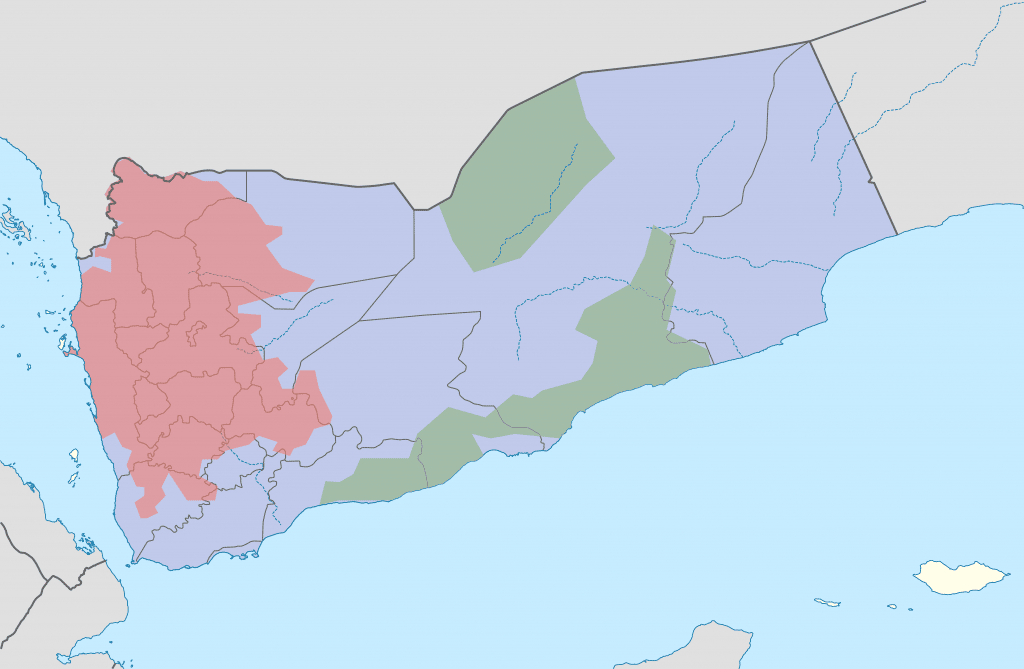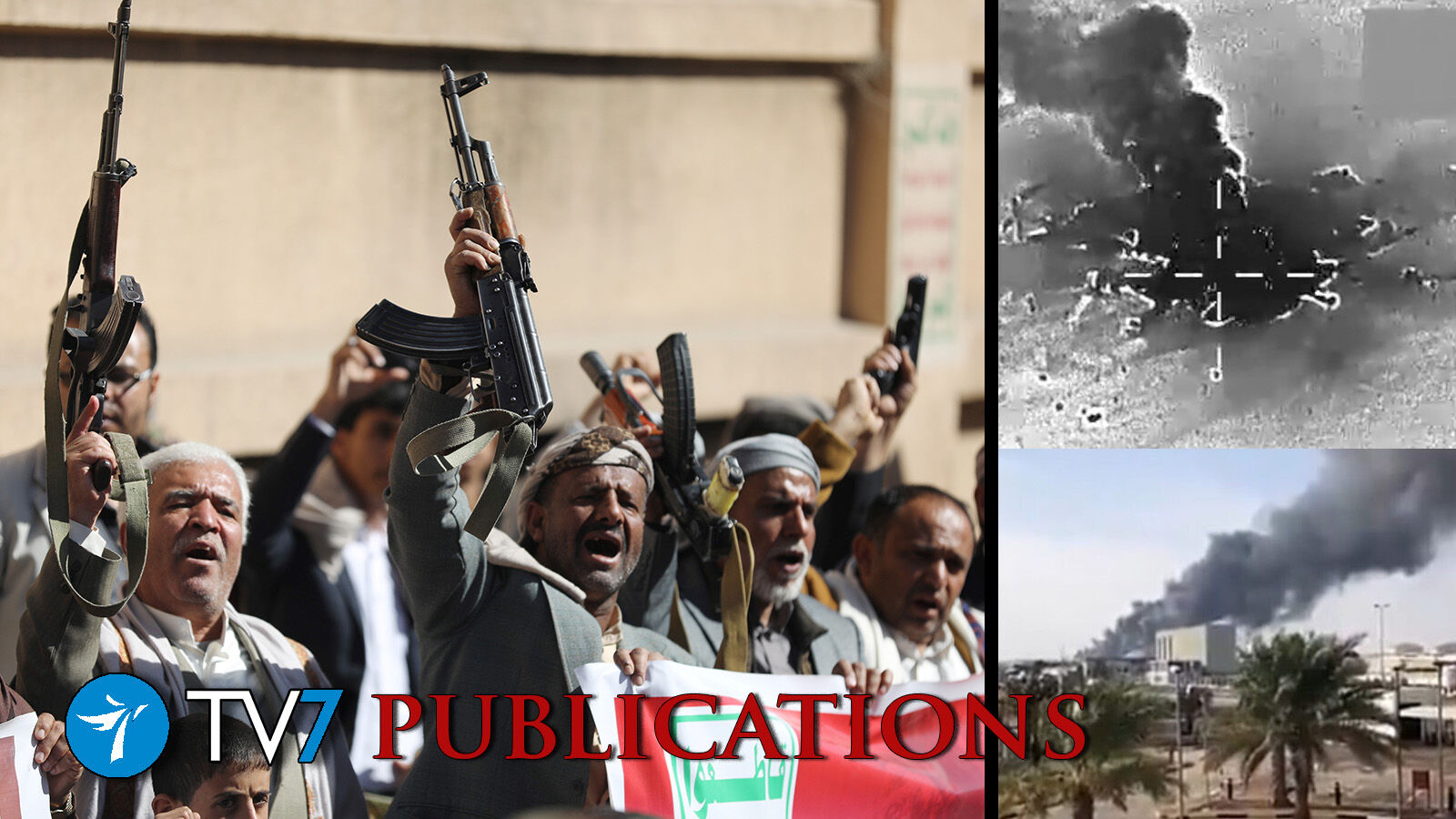Expert on Syria, Iraq, radical Islamic groups, and Kurds
Incensed by recent government gains in Yemen, the Iranians seek to intimidate the UAE into reversing course. At this juncture, it is therefore vital that both the US and Israel offer support for the UAE’s cause.
A Houthi military spokesperson said it had fired Zulfiqar ballistic missiles at al-Dhafra airbase that houses US forces and other “sensitive targets,” reported Reuters. He claimed that drones were launched to target Dubai.
The US military said it had fired Patriot missile interceptors at two missiles and that the UAE military made similar efforts.
There were no deaths or injuries reported. There are around 2000 US service personnel stationed at the UAE airbase.
This was the second attack by the Houthis on the Emirati capital in January. A drone attack on January 17 triggered a fuel tank blast, leading to the deaths of three foreign workers (two Indians and a Pakistani). The three were employees of ADNOC, the national oil company of the UAE. The earlier attack coincided with a Houthi missile launch on southern Saudi Arabia, in which two people were wounded.
These latest attacks represent a significant escalation deriving from the ongoing face-off in Yemen between forces loyal to the government of President Abd-Rabbu Mansour Hadi, supported by Saudi Arabia and the UAE, and the Iran-supported Houthis.
Al-Jazeera quoted Houthi Information Minister Dhaifallah Qasim Saleh al-Shami as stating that the January 17 “attack inside the United Arab Emirates is to teach them a lesson, to stop their involvement and participation in the Saudi-led coalition (in Yemen).”
The Houthi aggression against the UAE follows significant gains made in recent weeks by the government on the Yemeni battlefield, specifically in disputed Shabwa province in southern Yemen. All 17 districts of Shabwa are now under the control of the UAE and Saudi-supported government forces.
Located in the middle of the country and adjoining Marib province, Shabwa is the third largest province in Yemen. Control gives the government forces control of a large part of Yemen’s southern coastline.
In addition, Shabwa province contains significant oil and gas fields and has two ports available for use in energy export. One of these, Balhaf, has a liquefied natural gas facility. The offensive now looks to continue in the oil-rich Marib province, the main contested territory between the two sides. To the west of Marib lies Sanaa province and the Houthi-controlled capital city.

As al-Shami’s statement indicates, the latest attacks should be seen as a Houthi/Iranian response to these gains and an effort to raise the stakes to a point where the UAE folds and abandons its current effective support for the anti-Iran axis in Yemen.
What is the nature of this Emirati strategy, and what explains the timing of the latest Iranian/Houthi escalation? And what should be the Western and Israeli response to the latest attacks?
Current Emirati Strategy in Yemen: War by Proxy
As was widely reported in regional and international media, the UAE removed its conventional forces from Yemen in mid-2019. The withdrawal came as Iran renewed aggression against Emirati-flagged tankers in Gulf waters and against Saudi oil infrastructure. In addition, the UAE sought to revive dialogue with Tehran during the summer of 2019, and the withdrawal from Yemen was widely reported as reflecting this turn in policy.
This description of events, however, was somewhat simplistic. The Emirati withdrawal was partial, and as is now clear, represented a transition from engagement with a clumsy, Saudi-led strategy of direct intervention towards a more sophisticated approach of partnering with and supporting local forces.
Analyst James M. Dorsey accurately understood the nature of the Emirati withdrawal described it in August 2019 as “a fine-tuning rather than a reversal of the UAE’s determination to contain Iran and thwart political Islam.”
So, with which Yemeni forces are the UAE partnering?
The UAE has remained in close partnership with the Southern Transitional Council (STC), an organization that seeks the reconstitution of the former Democratic Republic of South Yemen (DRSY) and whose leadership traces back to the leadership elite of that state.
The historic DRSY, of course, was a strongly pro-Soviet state, which was known mainly for its domiciling of leftist terror groups in the 1970s. Little remains of this orientation today, but the STC is a coherent and well-organized structure based on the more modernized southern Yemeni population.
In recent months, the critical focus for the UAE and its associated forces has been Shabwa province. UAE personnel have been directly engaged in training a force known as the Shabwani Elite Forces. As its name suggests, this force recruits from among the population of Shabwa province. Mohammed Salem al Qumishi commands it. Consisting of around 6000 fighters, this unit has been seen carrying the flag of the DRSY, reported the New York Times in 2017.
In addition, Abu Dhabi has backed the 30,000 strong Giants Brigade, commanded by Brigadier General Abu Zarah al-Mahrami. His original group, trained and supported by the UAE armed forces, was later joined by the National Resistance (formerly the Republican Guards of the Saleh regime in Yemen), commanded by Brigadier General Tariq Saleh, son of former president Ali Abdullah Saleh.
Many of the fighters of the Giants Brigade are Salafis. But the south Yemeni composition of this unit should also be noted, and at the command level, it has good relations with the STC.
In Shabwa province, Hadi appointed a governor with good relations with the STC and the UAE that proved significant. Sheikh Awadh bin al-Wazir al Awlaki replaced Mohammed Saleh Bin Adio. The latter is a member of the Muslim Brotherhood-associated Islah party. He was opposed to UAE influence and associated with Saudi interests. His replacement served to unify the UAE-associated forces.
In an offensive launched at the beginning of January, these forces successfully drove the Houthis out of Shabwa province. with air support from the Saudi-led coalition
The Iran-backed forces were forced to abandon the areas of Ain, Usailan, and Bayhan and to retreat to the nearby provinces of Bayda and Marib. The recapture of Shabwa serves to reverse the dynamic of the war in Yemen. The next phase is likely to be an effort to clear the Houthis from the western part of Marib province, located directly east of the capital, Sanaa.
The Shabwa gains come after the Houthis seized an Emirati ship off the port of Hodeidah, claiming that it was carrying weapons.
The gains made by Emirati-associated forces in Shabwa represent a significant turn in the dynamic of the war in Yemen. Hence, it is unsurprising that the Iranians and their allies seek to reverse this process.
The 10-day Shabwa operation results from an effective partnering strategy with local forces by the UAE in southern Yemen. From an ideological point of view, the partnership might appear a strange one – the monarchists of the UAE, the secular socialist remnants of the DRSY, now organized in the STC, and the Salafi rank and file fighters of the Giants Brigades.
However, from this point of view, the alliance is no more unlikely than the US partnering with the Kurdistan Workers Party (PKK)-associated forces in the war against ISIS – a partnership that also proved to be a successful and durable arrangement.
This deft association with local forces is a key element of successful counterinsurgency. The UAE appears to have made considerable advances in this regard over the last half-decade.
What will happen in the next phase is crucial. It is a pressing interest for the West and Israel that the Houthis and Iran should be kept out of southern Yemen and, most importantly, prevented from taking control of Hodeidah Port and further south of the Bab al Mandeb Strait. Control of the latter would allow Tehran to choke off maritime traffic between the Gulf of Aden, the Red Sea, and the Suez Canal.
Western coverage of the Yemen war has tended to focus on the humanitarian issue. While this is undoubtedly important, it does not follow that the strategic problems cease to be urgent. It is imperative that the government cause in Yemen not be defeated.
Incensed by recent government gains, the Iranians seek to intimidate the UAE into reversing course. At this juncture, it is therefore vital that both the US and – through quieter channels – Israel offer explicit support for the UAE’s cause.
The returning of the Houthis to the US list of designated terror organizations and the resumption of active support for coalition efforts in Yemen would be helpful first steps.
JISS Policy Papers are published through the generosity of the Greg Rosshandler Family.
